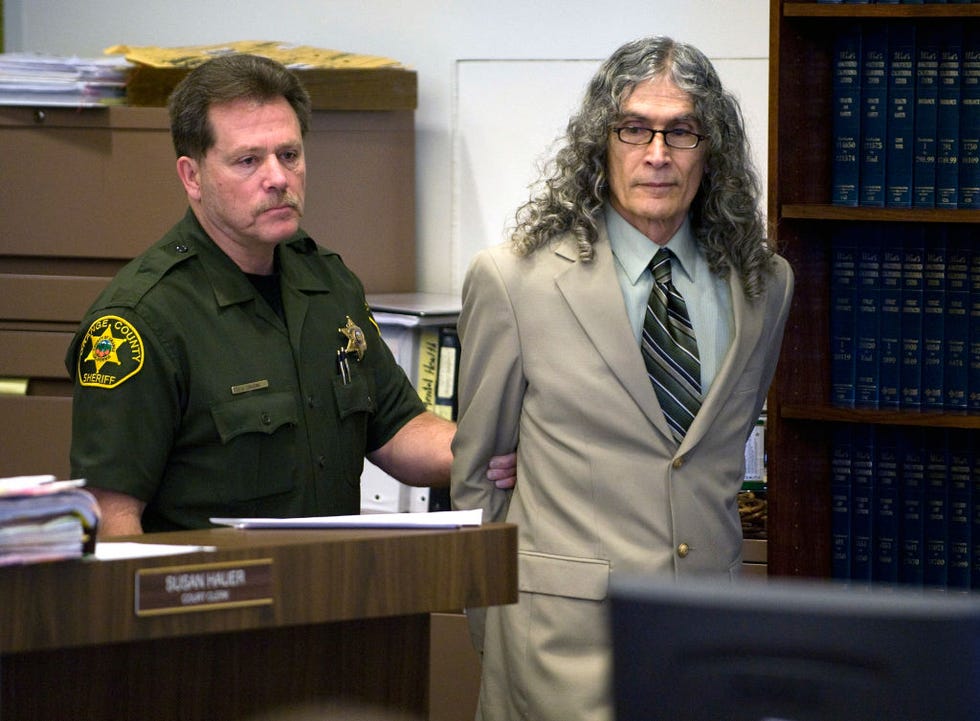Rodney alcala victims – Rodney Alcala’s victims stand as a chilling testament to the depths of human depravity. From his early crimes in the 1970s to his eventual capture in the 2000s, Alcala’s reign of terror left an enduring mark on countless lives and communities.
As we delve into the details of Alcala’s crimes, we will explore his modus operandi, the evidence that led to his conviction, and the profound impact his actions had on his victims and society as a whole.
Rodney Alcala’s Victims
Rodney Alcala, also known as the “Dating Game Killer,” is a serial killer and rapist who committed multiple murders in the 1970s. He was convicted of seven murders, but is suspected of killing many more. The following is a list of Alcala’s known victims:
Chronological List of Victims
- Cornelia Crilley (23): Murdered in New York City on July 14, 1971. Her body was found in her apartment, and she had been strangled.
- Ellen Jane Hover (23): Murdered in Los Angeles, California on February 24, 1977. Her body was found in her apartment, and she had been strangled.
- Jill Barcomb (18): Murdered in Los Angeles, California on June 10, 1977. Her body was found in her apartment, and she had been strangled.
- Georgia Wixted (27): Murdered in Seattle, Washington on July 15, 1977. Her body was found in her apartment, and she had been strangled.
- Charlotte Lamb (32): Murdered in Los Angeles, California on September 21, 1977. Her body was found in her apartment, and she had been strangled.
- Jill Parenteau (21): Murdered in Burbank, California on October 28, 1977. Her body was found in her apartment, and she had been strangled.
- Robin Samsoe (12): Murdered in Huntington Beach, California on June 20, 1979. Her body was found in the Santa Ana River, and she had been strangled.
Rodney Alcala’s Trial and Sentencing
Rodney Alcala’s trial began in 1979 and lasted for several months. The prosecution presented a mountain of evidence against him, including eyewitness testimony, DNA evidence, and photographs of his victims. Alcala represented himself during the trial, which proved to be a disastrous decision. He made numerous bizarre and rambling statements, and his behavior alienated the jury.
In October 1979, Alcala was convicted of five counts of first-degree murder and one count of attempted murder. He was sentenced to death.
Legal Challenges and Controversies, Rodney alcala victims
Alcala’s case has been the subject of numerous legal challenges and controversies. In 1984, his death sentence was overturned on appeal due to prosecutorial misconduct. He was retried in 1986 and again sentenced to death. However, this sentence was also overturned on appeal in 2003 due to errors in the jury instructions.
In 2010, Alcala was finally sentenced to death for a third time. This sentence was upheld on appeal in 2012. Alcala remains on death row at San Quentin State Prison.
The Impact of Rodney Alcala’s Crimes: Rodney Alcala Victims
Rodney Alcala’s crimes had a profound and lasting impact on his victims’ families, the community, and the media landscape. His heinous actions left an indelible mark on those who knew him, sparking widespread fear and outrage.
Rodney Alcala, known as the “Dating Game Killer,” left a trail of victims in his wake. Among them was Cheryl Bradshaw , a young woman who disappeared in 1978. Alcala’s victims were often young women who he met through social events or through his photography work.
Their tragic stories serve as a chilling reminder of the dangers that can lurk in the shadows.
Impact on Victims’ Families
The families of Alcala’s victims were left shattered by the loss of their loved ones. They endured unimaginable pain and suffering, compounded by the cruel and senseless nature of the crimes. Many struggled to come to terms with the horrific details of their loved ones’ deaths, facing years of emotional turmoil and grief.
Community Impact
Alcala’s crimes cast a shadow of fear over the communities where he operated. Residents lived in constant apprehension, fearing that he might strike again. The sense of safety and security was eroded, leaving a lasting legacy of distrust and anxiety.
Media Coverage and Public Reaction
Alcala’s case garnered significant media attention, captivating the nation with its gruesome details and the enigmatic nature of the perpetrator. The public was horrified by the extent of his crimes, fueling a sense of outrage and a demand for justice.
Psychological and Sociological Factors
Psychologists and sociologists have analyzed Alcala’s behavior, seeking to understand the complex psychological and sociological factors that may have contributed to his actions. Some experts suggest that he suffered from a personality disorder characterized by a lack of empathy and a need for control. Others have pointed to his troubled childhood and history of violence as possible contributing factors.
“Woman of the Hour”
Released in 2018, “Woman of the Hour” is a fictionalized account of the life and crimes of Rodney Alcala. The film follows the story of Gwen Graham, a young woman who becomes obsessed with Alcala after seeing his photograph on a missing person’s poster. As she investigates his past, Gwen uncovers a trail of violence and deception that leads her to question her own sanity.
Portrayal of Rodney Alcala and His Crimes
The film portrays Alcala as a charismatic and manipulative predator who used his charm to lure his victims to their deaths. The film depicts his crimes in graphic detail, including the murder of Robin Samsoe, a 12-year-old girl who was found dead in 1979. The film also explores Alcala’s history of violence and sexual assault, including his conviction for the rape and murder of Cornelia Crilley in 1971.
Historical Accuracy and Impact on Public Perception
While “Woman of the Hour” is a fictionalized account of Alcala’s crimes, it is based on extensive research and interviews with law enforcement officials and victims’ families. The film has been praised for its accuracy in depicting Alcala’s crimes and for raising awareness of the dangers of serial killers.
The film has also had a significant impact on public perception of the case. It has helped to humanize the victims and their families and has shed light on the long-term effects of violent crime. The film has also raised questions about the role of the media in covering serial killers and the impact of sensationalism on public opinion.
Final Thoughts
The story of Rodney Alcala’s victims is a tragic reminder of the fragility of human life and the devastating consequences of unchecked violence. Through their stories, we gain a glimpse into the darkness that can lurk within the human heart and the resilience of those who have endured unspeakable horrors.




